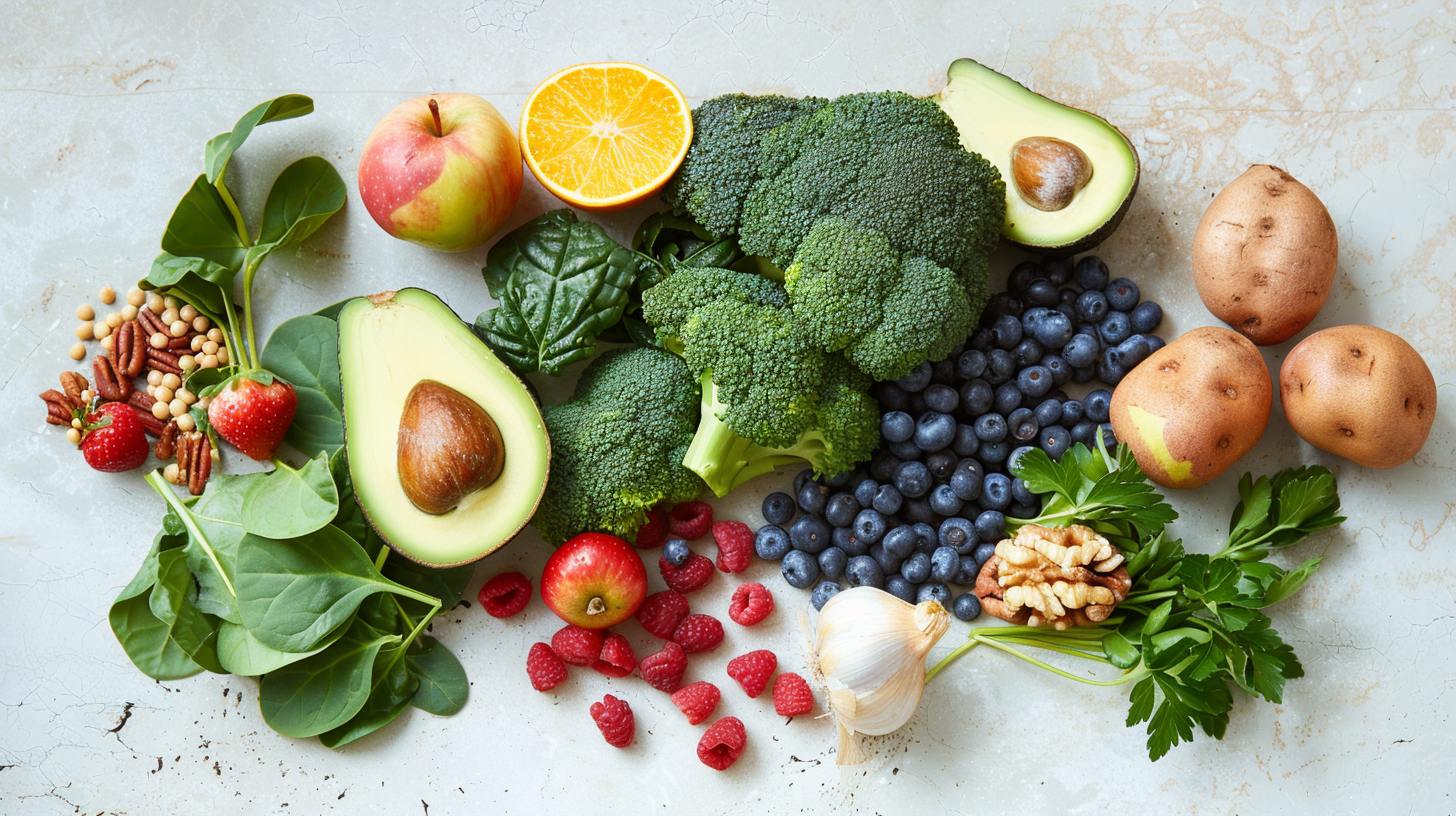
Managing blood sugar levels is crucial for overall health, particularly for those with diabetes or prediabetes. Diet plays a significant role in blood sugar management, and incorporating the right foods can help keep blood sugar levels in check. This article explores various foods that are known to lower blood sugar, offering both nutritional insights and practical tips for incorporating these foods into your diet.
1. Leafy Greens
Leafy green vegetables like spinach, kale, and Swiss chard are excellent choices for blood sugar management. They are low in calories and carbohydrates, but rich in fiber, vitamins, and minerals. Fiber slows the absorption of sugar into the bloodstream, which helps maintain steady blood sugar levels.
How to Include Leafy Greens in Your Diet
- Salads: Add a variety of greens to your salads.
- Smoothies: Blend spinach or kale into your morning smoothie.
- Stir-Fries: Incorporate Swiss chard or collard greens into stir-fries.
2. Berries
Berries, including strawberries, blueberries, raspberries, and blackberries, are packed with antioxidants, vitamins, and fiber. Their high fiber content helps slow down the digestion of carbohydrates, leading to a more gradual rise in blood sugar.
How to Include Berries in Your Diet
- Snacks: Enjoy a handful of fresh berries as a snack.
- Toppings: Add berries to yogurt, oatmeal, or cereal.
- Desserts: Use berries in healthier dessert recipes.
3. Whole Grains
Whole grains such as oats, quinoa, barley, and brown rice are rich in fiber and have a lower glycemic index compared to refined grains. This means they cause a slower, more controlled rise in blood sugar levels.
How to Include Whole Grains in Your Diet
- Breakfast: Start your day with a bowl of oatmeal or whole grain cereal.
- Side Dishes: Use quinoa or brown rice as a side dish for meals.
- Baking: Substitute whole grain flour in baking recipes.
4. Nuts and Seeds
Nuts and seeds are excellent sources of healthy fats, protein, and fiber. These nutrients can help stabilize blood sugar levels by slowing the absorption of carbohydrates.
How to Include Nuts and Seeds in Your Diet
- Snacks: Enjoy a small handful of nuts or seeds as a snack.
- Salads: Sprinkle nuts or seeds on top of salads.
- Baking: Use ground flaxseeds or chia seeds in baking recipes.
5. Legumes
Legumes, including beans, lentils, and chickpeas, are high in fiber and protein, making them a great option for blood sugar control. They have a low glycemic index and can help improve insulin sensitivity.
How to Include Legumes in Your Diet
- Soups and Stews: Add beans or lentils to soups and stews.
- Salads: Mix chickpeas or black beans into salads.
- Main Dishes: Use legumes as a base for vegetarian main dishes.
6. Cinnamon
Cinnamon has been shown to improve insulin sensitivity and lower blood sugar levels. Including this spice in your diet can add flavor and provide potential blood sugar benefits.
How to Include Cinnamon in Your Diet
- Spices: Add cinnamon to oatmeal, yogurt, or smoothies.
- Baking: Use cinnamon in baking recipes like muffins or bread.
- Beverages: Sprinkle cinnamon into your coffee or tea.
7. Avocados
Avocados are rich in healthy fats, fiber, and various vitamins and minerals. Their high fiber and fat content can help slow the absorption of carbohydrates and keep blood sugar levels stable.
How to Include Avocados in Your Diet
- Sandwiches: Add avocado slices to sandwiches or wraps.
- Salads: Mix avocado into salads.
- Smoothies: Blend avocado into smoothies for a creamy texture.
8. Garlic
Garlic has been linked to improved blood sugar control and increased insulin sensitivity. Its potent compounds can help reduce inflammation and provide overall health benefits.
How to Include Garlic in Your Diet
- Cooking: Use garlic in cooking to add flavor to dishes.
- Roasting: Roast garlic and spread it on whole grain bread.
- Dressings: Incorporate garlic into salad dressings or marinades.
9. Greek Yogurt
Greek yogurt is a high-protein, low-carbohydrate dairy option that can help regulate blood sugar levels. Its probiotics also support gut health, which can have a positive impact on blood sugar control.
How to Include Greek Yogurt in Your Diet
- Breakfast: Enjoy Greek yogurt with berries and a drizzle of honey.
- Snacks: Have a cup of Greek yogurt as a snack.
- Smoothies: Blend Greek yogurt into smoothies for added creaminess and protein.
10. Sweet Potatoes
Sweet potatoes have a lower glycemic index compared to regular potatoes, meaning they cause a slower rise in blood sugar levels. They are also rich in fiber, vitamins, and antioxidants.
How to Include Sweet Potatoes in Your Diet
- Baking: Bake sweet potatoes as a side dish.
- Mashing: Make mashed sweet potatoes as an alternative to regular mashed potatoes.
- Snacks: Slice and bake sweet potato chips for a healthy snack.
11. Citrus Fruits
Citrus fruits like oranges, grapefruits, lemons, and limes are high in fiber, vitamin C, and antioxidants. These nutrients help manage blood sugar levels and provide a refreshing addition to your diet.
How to Include Citrus Fruits in Your Diet
- Snacks: Eat whole citrus fruits as snacks.
- Juices: Drink freshly squeezed citrus juice (in moderation).
- Salads: Add citrus segments to salads for a burst of flavor.
12. Apple Cider Vinegar
Apple cider vinegar has been shown to improve insulin sensitivity and lower blood sugar levels after meals. Including it in your diet can provide additional blood sugar benefits.
How to Include Apple Cider Vinegar in Your Diet
- Dressings: Use apple cider vinegar in salad dressings.
- Beverages: Mix a tablespoon of apple cider vinegar with water and drink before meals.
- Cooking: Add apple cider vinegar to marinades or sauces.
Conclusion
Incorporating these foods into your diet can help manage blood sugar levels effectively. By focusing on nutrient-dense options like leafy greens, berries, whole grains, nuts, seeds, legumes, and healthy fats, you can maintain steady blood sugar levels and support overall health. Remember to pair these dietary changes with regular physical activity and consult with a healthcare professional for personalized advice.
Managing blood sugar is a lifelong commitment, but with the right dietary choices, it can be a manageable and rewarding journey. Start making small, sustainable changes today and experience the positive impact on your blood sugar levels and overall well-being.






Leave a Reply